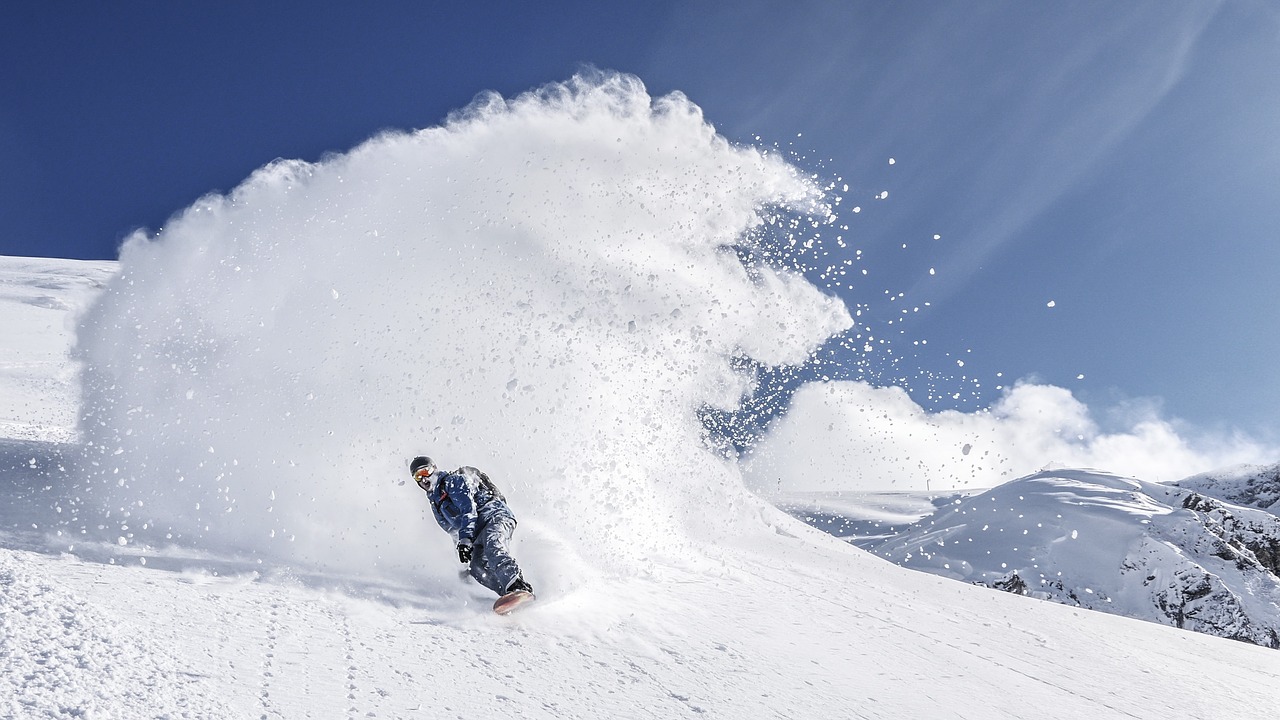Snowboarding is an Olympic winter sport, the essence of which is the descent from the snow slopes or mountains on a special board – a snowboard.
The International Ski Federation (Fédération Internationale de Ski, FIS) is an international organization that oversees all forms of skiing, including snowboarding.
History of snowboarding
Snowboarding is considered a young sport, not even a hundred years old yet. It was invented in the 60’s by American Sherman Poppen, a prototype of the modern snowboard was made from two glued skis. Poppen called his invention “snerfer”. There were no fasteners on the board, and the rider had to hold on to a special rope attached to the nose of the projectile.
The resulting sport began to gain popularity. Demetrius Milovich, Jake Burton (founder of Burton Snowboards), Tom Sims (Sims Snowboards), Mike Olson (Mervin Manufacturing) had a great influence on its development.
In 1979, the first World Surfing Championship was held. One of the competitors in this event was Jake Burton, who made some improvements to his board by adding bindings to it. Due to the fact that Burton’s shell was different from the rest, he had to compete separately from all the other riders. Being the only competitor, he easily won the contest.
In 1982, the first U.S. national slalom competition was held at Suiside Six. In 1983, the first World Halfpipe Championship was held in Soda Springs, California.
In 1988, the first World Snowboarding Championship was held, and in 1998, snowboarding was recognized as an Olympic sport.
Today the Olympic program includes three snowboarding disciplines: giant slalom, boardercross and halfpipe.
Disciplines in snowboarding
Let’s look at the main disciplines (types) of snowboarding. Parallel slalom – was an Olympic discipline until 2014 (eliminated in 2015). Two athletes descend on parallel tracks with flags of blue and red colors set on them. The athlete who goes the distance the fastest wins.
Giant slalom is an Olympic discipline since 2002. The snowboarder must overcome the course marked with gates for the shortest possible time.
Snowboard cross – Olympic discipline since 2006. The snowboarder must descend a long, flat, wide track with various obstacles (terrain figures, jumps).
Halfpipe – Olympic discipline since 1998. Snowboarder must perform various tricks on a snowboard while flying out of the vertical part of the half-pipe (structure similar to a half pipe).
Slopestyle is an Olympic discipline since 2014. The snowboarder must pass a course with many shells to perform acrobatic tricks.
Big Air – included in the Olympic program in 2018. A long and protracted jump from a ski jump during which the snowboarder performs some kind of trick.
Quarterpipe – skiing on a ramp that looks like one, but larger, half of a halfpipe.
Jibbing – snowboarding in specially equipped parks.
Trends in snowboarding
Freestyle – a direction of snowboarding, which includes the following techniques: jumps on trampolines, skating using different constructions, tricks on the surface of the slopes, overcoming obstacles. Freestyle is used in snowboard cross, halfpipe, slopestyle, big-air and jibbing.
Freeride – a direction of snowboarding that involves free riding, not limited to prepared slopes or parks, without rigidly defined routes, goals or rules.
Hard snowboarding – a trend that is based on technical downhill skiing.
Snowboarding equipment
Snowboarding board is the most important piece of snowboarding equipment. A snowboard is a multi-layered construction with a metal edge around the bottom.
The boots are the second most important piece of snowboarding equipment. The boots are designed to provide a stable foot position and protection from injury.
Bindings are an element of the basic equipment of a snowboarder, they are selected under the boots.
Helmet is an optional, but very important element of snowboarding equipment. It protects the rider from serious injuries.
Gloves are an optional, but important piece of equipment, protecting the hands of the snowboarder from injury and cold.
A snowboarding mask is an optional piece of equipment, designed to protect your eyes from UV light and should in no way impair the rider’s visibility.
Snowboarding clothing should be warm, waterproof and breathable on the outside, versatile and beautiful.
Gloves are an optional, but important piece of equipment, protecting the hands of the snowboarder from injury and cold.
A snowboarding mask is an optional piece of equipment, designed to protect your eyes from UV light and should in no way impair the rider’s visibility.
Snowboarding clothing should be warm, waterproof and breathable on the outside, versatile and beautiful.
Snowboarding competitions
Olympic Games.
The World Championship is an international snowboarding competition held since 1996, every odd-numbered year. Modern world championships include performances in 6 disciplines: snowboard cross, halfpipe, parallel slalom, parallel giant slalom, slopestyle and big air.
World Cup – a series of major international cup competitions in men’s and women’s snowboarding.
X-Games – an annual sporting event specializing in extreme sports.
US Open – the U.S. Open snowboarding championships.
